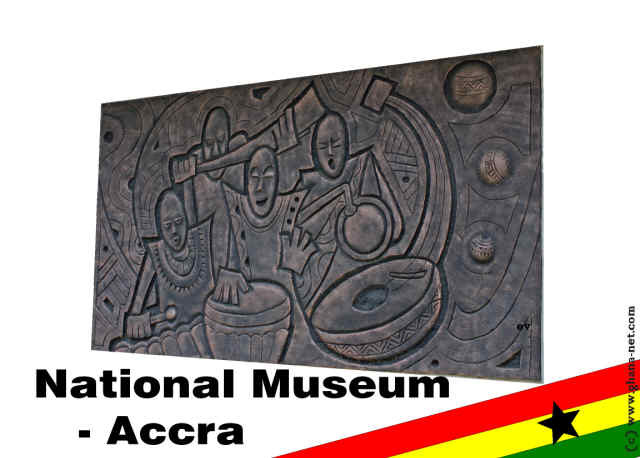

Advertisement

The official opening of the National Museum of Ghana took place on March 5, 1957, and was performed by Her Royal Highness the Duchess of Kent, the late Princess Marina, as part of the celebrations leading up to Ghana’s independence. This significant event marked the beginning of a new cultural era for the soon-to-be independent nation.
The museum’s first director was A.W. Lawrence, a distinguished British archaeologist and classical scholar. He was the younger brother of the famed T.E. Lawrence (“Lawrence of Arabia”) and played a key role in laying the foundation for the museum’s early collections, exhibitions, and educational mission. Under his leadership, the museum began its journey to becoming a center for the preservation and promotion of Ghana’s rich cultural and historical heritage.
Collections and Exhibitions at the National Museum of Ghana
The National Museum of Ghana houses a diverse and rich collection that spans archaeology, ethnography, and fine art, offering visitors a comprehensive view of Ghana’s cultural and historical heritage.
In the archaeology section, artifacts range from the Stone Age to the recent historical past, reflecting the long and continuous human presence in the region. These objects include tools, pottery, and relics that illustrate the evolution of life and society in what is now modern Ghana.
The ethnography gallery features a permanent exhibition showcasing the vibrant traditions and everyday life of Ghana’s many ethnic groups. Highlights include chiefs’ regalia, indigenous Ghanaian musical instruments, gold weights, beads, traditional textiles, wooden stools, and ceramic pottery. These objects are not only visually striking but also rich in symbolism and cultural meaning.
The museum also includes significant items from other parts of Africa, acquired through cultural exchange. These include Senufo masks from Côte d’Ivoire, Zulu wooden figures and beadwork from Southern Africa, ancient Ife bronze heads from Nigeria, and Bushongo carvings from the Democratic Republic of Congo. Together, these pieces emphasize the interconnectedness and diversity of African artistic traditions.
The art gallery, though modest in size, offers an impressive collection of contemporary Ghanaian artworks. Paintings are done in a variety of media, including oil, pastel, acrylic, watercolor, and collage. In addition, the gallery features sculpture in various materials, reflecting the dynamic and evolving nature of Ghanaian artistic expression.
Beyond its permanent displays, the museum regularly hosts temporary exhibitions, organized not only by the National Museum itself but also in collaboration with individual artists, cultural organizations, and foreign embassies. These exhibitions help to keep the museum a lively space for cultural exchange, dialogue, and discovery.
Outdoor Exhibition – A Gateway into Ghana’s Past
As you enter the grounds of the National Museum of Ghana, your journey begins with our outdoor exhibition, an engaging space that offers an open-air introduction to the nation’s cultural and historical legacy. Here, visitors encounter a collection of life-sized statues, sculptures, and installations that reflect key aspects of Ghanaian and broader African life—from depictions of daily rural scenes to representations of ancestral spirits and traditional leaders.
Among these outdoor displays are important historical artifacts from the British Gold Coast era, offering insights into the colonial past that preceded Ghana’s independence. These objects tell stories of resistance, adaptation, and transformation—capturing the complex relationships between local traditions and foreign rule.
This outdoor gallery sets the stage for what lies inside the museum—an immersive journey through the rich tapestry of Ghana’s archaeological, ethnographic, and artistic heritage.
Advertisement